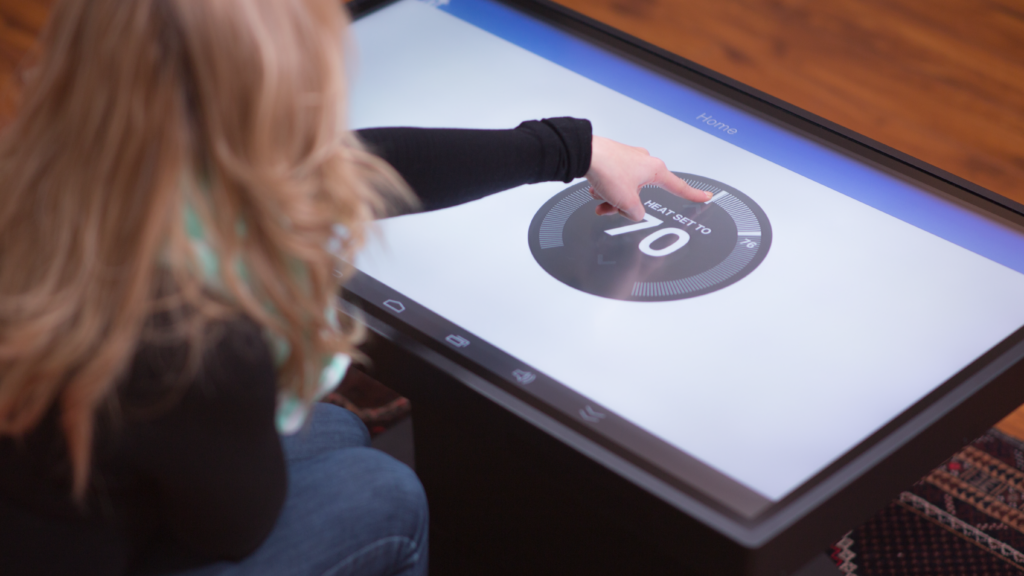Enhance Your Home With Home Automation Technology

[vc_row][vc_column][vc_column_text]This post also appeared in The Tennessean, where Concept Technology has a bi-weekly feature in the Business section.
You may not know it, but the “smart home” of the future is already here.
Home automation technologies have gained traction and become much more affordable over the past few years.
We recently asked Interactive Systems CEO Adin Lara a few questions about home automation to gain a greater understanding of the trend.
In Adin’s words, home automation uses technology to control and automate electrical systems, appliances and other electronic devices. It saves time and energy, offers convenience and enhances the capabilities of your home.
Here’s more of what we learned.
If you could automate just one thing in your home, what would that be?
That’s a tough one, but I would have to say automated lighting. It saves energy, is easy to use and control, it can change the look of a room and it is very convenient. The “goodnight button” that shuts down all the lights is a popular feature, as are the outside lights that come on at sunset or when you drive in the driveway.
What kind of budget does a homeowner have to have to consider adding home automation into his or her life?
It depends on how big the home is and how many features a homeowner wants, but it’s a lot more affordable than it used to be.
Internet streaming services such as Apple TV, Netflix, Vudu, Pandora and Spotify have limited the need for expensive video or music servers. Wireless technology has drastically reduced the cost of installation of many home automation systems that previously required wired connections. Free or inexpensive smartphone apps have reduced the need for fixed control panels or independent remote controls.
[/vc_column_text][wproto_quote text=”We’re installing whole-house audio systems, lighting controls, home theaters and even security camera systems for homeowners every day. An entry-level home automation system can begin as low as $1,000.”][/vc_column][/vc_row][vc_row][vc_column][vc_column_text]Where is home automation heading in the next year?
In the next year, we’ll see more do-it-yourself-type products in the market from big box retailers such as Lowe’s and The Home Depot.
The next three years …?
I think you’ll see appliances with network connectivity become more commonplace. Ovens you can preheat before you get home. Pantries and refrigerators that can scan and inventory contents to tell you when items are getting stale or expiring, or automatically update your shopping lists.
Ten years…?
We’ll begin to see touchscreens on other surfaces in the home besides tablets and TVs — think kitchen countertops and bathroom mirrors. We’ll also begin to see the home automation systems become more “intelligent” — they’ll be able to learn and predict a homeowner’s behavior patterns.
How have home automation and mobile technology evolved together?
Thanks to the late Steve Jobs, “it’s an app world,” and the manufacturers in our industry were quick to pick up on this fact. They recognized that connecting apps to automation systems would open the market to homeowners who previously were hesitant to adopt what they assumed was complicated technology.
Now, every home automation system has a smartphone app that goes with it, so the controls and the settings can reside in your pocket or on a tablet.
Mobile also keeps us connected to our home automation systems while we’re away. Unlocking the door for the plumber when we’re late to meet him, turning on the alarm while on vacation, cranking up the heat on the way home from a cold night out — all accomplished with a few button presses from anywhere in the world.
What are your thoughts on open-source home automation technology?
I am all for the creativity and more rapid advancement of technology that open source enables, but I am concerned about the “Wild West” mentality that seems to go with it.
We prefer systems that are easy to use, stable, reliable and dependable. This takes much greater priority than providing whiz-bang features or the latest and greatest bells and whistles. Too much open-source development could lead to fragmented automation systems. This will potentially confuse homeowners and keep them from becoming comfortable with the technology.
Beyond the home, where will automation software have the biggest impact?
Automation will be everywhere — in our cars, health care facilities, hotels and schools. Each new generation is more tech-savvy and accustomed to automated environments — they’ll demand it everywhere.
Photo credit: Flickr photo by Ideum.[/vc_column_text][/vc_column][/vc_row][vc_row][vc_column][/vc_column][/vc_row]









